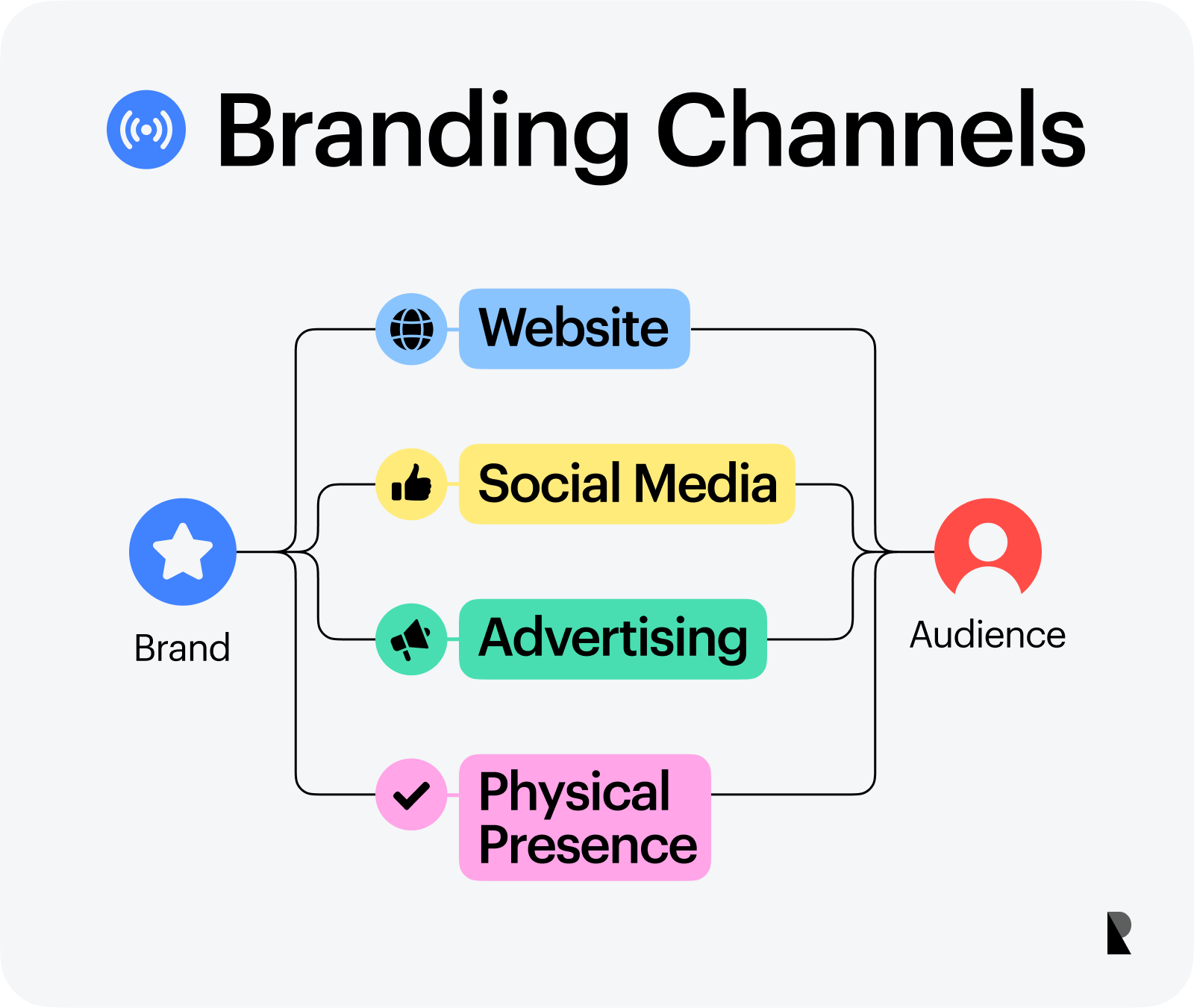Exactly How Robust Branding Adds To Increased Market Share and Sales
The Power of Durable Branding: An Overview to Enhancing Your Brand's Strength
A distinct brand identification not only establishes a company apart however also cultivates depend on and commitment amongst consumers. Several companies ignore important approaches that can even more intensify their brand name's toughness.
Recognizing Brand Name Identity
A brand name identity incorporates the distinct aspects that identify a business from its rivals and resonate with its target market. This identification is built via different elements, including visual components, messaging, and total brand experience. A natural brand identification not just communicates what a business represents however additionally constructs acknowledgment and loyalty among customers.
Central to brand identification are aesthetic elements such as logos, color pattern, and typography. These parts develop an aesthetic representation of the brand name that can stimulate particular feelings and perceptions. Uniformity across platforms strengthens brand name recognition and cultivates trust.
Additionally, the messaging related to a brand name, including taglines and interaction style, plays a crucial duty in shaping its identification (Robust Branding). The intonation and language made use of can communicate the brand name's individuality, whether it is professional, playful, or cutting-edge
Lastly, the general brand name experience, encompassing client interactions and touchpoints, affects exactly how customers perceive the brand name. A favorable and constant experience fosters a solid brand name identification that can withstand market fluctuations and competition. On the whole, a distinct brand name identity is necessary for developing a significant existence in today's dynamic market.
Building Psychological Connections
Developing a solid brand name identity acts as a foundation for cultivating psychological connections with consumers. These links are vital, as they not just improve customer loyalty however additionally motivate supporters that will certainly champion your brand name. To construct emotional connections, brand names need to initially recognize the core worths and mission that reverberate with their target market. By aligning these worths with the consumers' ideas, brands can create a feeling of common purpose.
Narration plays an important duty in this procedure. Brand names that tell relatable and genuine stories can evoke feelings, permitting customers to see themselves in the brand's trip. Furthermore, integrating visuals that show the brand's significance can additionally deepen psychological interaction.
An additional efficient approach is to individualize customer communications. Tailoring experiences based upon customer choices fosters a feeling of belonging and value. Involving with consumers through social media sites platforms can also enhance these psychological connections, as it provides a room for dialogue and community building.
Eventually, brands that prioritize emotional links are a lot more likely to grow enduring relationships, leading to enhanced customer retention and advocacy. By producing significant communications, brand names can change customers into faithful advocates, driving long-lasting success.
Consistency Across Channels
Preserving uniformity throughout all networks is essential for reinforcing brand name identity and trust. When customers experience a brand name, they anticipate an uniform experience, despite the system. This uniformity develops knowledge, which in turn cultivates commitment. In today's electronic age, where interaction extends web sites, social networks, email, and offline interactions, making sure that your brand name's voice, visuals, and messaging continue to be lined up is extremely important.
To attain this, organizations should establish clear brand name standards that lay out the use of logo designs, color combinations, typography, and intonation. These guidelines act as a reference for all staff member and outside partners, making sure uniformity across advertising materials and customer interactions.
In addition, normal audits of all interaction channels can help identify inconsistencies and locations for improvement. By actively keeping track of these channels, brands can promptly address incongruities, thus keeping a cohesive identity.
Inevitably, a regular brand presence not just improves acknowledgment however likewise fosters a feeling of dependability among consumers. When consumers know what to anticipate, they are more probable to engage with and supporter for the brand name, solidifying its placement in an affordable market.
Leveraging Brand Narration
Brand name narration offers as a powerful tool for engaging consumers on a deeper psychological degree. By weaving narratives that reflect the brand's values, mission, and character, business can produce a genuine connection with their audience. An engaging brand tale transcends plain item functions, inviting customers to come to be component of a larger story that resonates with their very own experiences and aspirations.
To successfully take advantage of brand storytelling, businesses must determine their one-of-a-kind voice and core message. This story should be consistently interacted via numerous channels, making sure alignment with the brand name's general identity. Engaging stories can be shared through multiple directory layouts, consisting of social networks, promotions, blogs, and videos, enabling brand names to reach customers where they are most receptive.

Measuring Brand Toughness

To successfully determine brand toughness, companies can use quantitative methods such as studies and analytics devices. Surveys can evaluate brand awareness and client sentiment, while analytics can track involvement on electronic systems. Furthermore, Web Promoter Score (NPS) functions as a beneficial statistics to review consumer commitment and the probability of referrals.
Qualitative data, gathered through emphasis teams or social media sites paying attention, can enhance quantitative findings, providing a much deeper understanding of customer assumptions. Tracking market share and sales growth can further brighten the brand's competitive standing.
Ultimately, a comprehensive approach to gauging brand name strength entails both measurable and qualitative analysis. By consistently reviewing these metrics, brand try this names can make informed choices to improve their positioning, adapt to customer preferences, and inevitably enhance their market existence.
Final Thought

Lastly, the general brand name experience, incorporating customer interactions and touchpoints, affects just how customers perceive the brand name. Brand names that narrate authentic and relatable tales can stimulate emotions, allowing consumers to see themselves in the brand's trip. Eventually, by leveraging brand name narration, services can foster loyalty, influence campaigning for, and cultivate a neighborhood around common worths, thus enhancing their overall brand stamina.
While developing a solid brand identity is critical, measuring brand strength is equally essential to evaluate its efficiency and effect in the marketplace (Robust Branding). Brand strength encompasses various metrics, including brand awareness, customer loyalty, and perceived worth